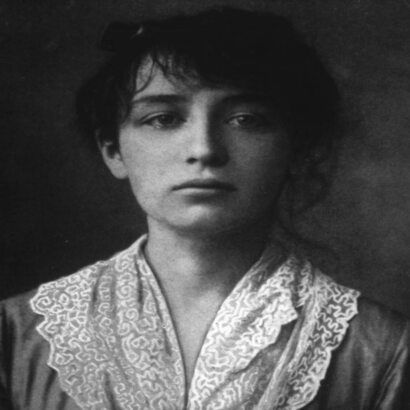Camille Claudel finally has her museum since 2017!
Her talent discovered and encouraged by the sculptor Alfred Boucher (to whom we also owe the first museum of Nogent and the creation of La Ruche in Paris), it is in Paris that Camille Claudel will go to train, in particular in the workshop of Auguste Rodin of whom she will become from 1884: the assistant, the model and the lover, until their rupture in 1893 and the slow degradation of the state of Camille's mental health which will ensue. But it is in Nogent-sur-Seine, which has the largest collection of her works in the world, that a museum is now dedicated to her. It opened on March 26, 2017, not without some difficulties.
Housed in the former house of the Claudel family rehabilitated to which was added a new brick building designed by architect Adelfo Scaranello and perfectly integrated into the urban fabric, the museum, which had already acquired between 2006 and 2008 the Head of Hamadryade, the Implorant and Perseus and the Gorgon, was able to purchase the private collection of Reine-Marie Paris, the great-niece of Camille Claudel. This art historian has devoted her life to making known the work of her great-aunt, whose tragic life has inspired numerous books and films that have helped bring her genius out of oblivion and out of the tutelary shadow of Rodin.
A museum of French sculpture at the turn of the 19th and 20th centuries.
Luminous, uncluttered and intelligently thought out, the museum's itinerary magnificently highlights some forty works by Camille Claudel, including her most sublime: La Valse, L'Abandon, La Petite Châtelaine (including a marble copy on loan from La Piscine in Roubaix), L'Implorante, L'âge mûr, Les Causeuses...sometimes in several versions (plaster, terracotta, bronze, marble, flamed sandstone). Their dialogue with works by Rodin reminds us that the influence was two-way and highlights the expressiveness (Clotho), the sensuality (L'Abandon), the ardor (La Valse), the drama sometimes (L'Âge mûr) of the sculptures of Camille Claudel who, despite his singularity, fits perfectly into his time with his language that weaves links between Naturalism and Symbolism, the neo-Florentine current and Art Nouveau.
It is another success of this museum and its young curator Cécile Bertran, 39 years old, to show, next to the works of Camille Claudel (and Rodin), sculptures by Marius Ramus, Paul Dubois, Alfred Boucher, but also Gustave Doré, Jules Dalou, Alexandre Falguière, François Pompon or Antoine Bourdelle, who bear witness to French sculpture at the turn of the 19th and 20th centuries, with its taste for the nude, Antiquity, mythology or the representation of work - most often realized, like this beautiful Terrassier pensively leaning on his pickaxe by Émile Laporte (1858-1907). Also fascinating is the focus on the different techniques of sculpture, including a film that allows visitors to visualize and understand the casting of a bronze; a complex and essential art that required close cooperation between the founder and the sculptor, and above all the latter's trust. Camille Claudel, who encountered many difficulties in obtaining orders for bronze pieces, worked between 1902 and 1905 with the founder and publisher Eugène Blot, a loyal supporter of the artist who played a decisive role in the distribution of his works.
Catherine Rigollet (report 2017)


